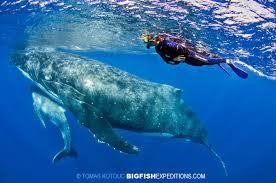If you’re a keen nature fan then have you ever thought about combining your love of all things natural with a great holiday destination? For anyone seeking a creature-oriented break, you can’t go wrong in the Caribbean. The crystal clear waters and tropical rainforests mean that exotic wildlife abounds. From rare birds and colorful reef fish to majestic whales and sharks, animals are aplenty. We are a nation of animal lovers ready to pass on some Healthy Dog Treats like those at https://theinnocentpet.co.uk/collections/healthy-dog-treats for example, not that there are any such things for whales and sharks, so this trip is perfect.
For reptiles, fish and birds, take a trip to Mona Island, Puerto Rico. Mona Island lies 42 miles west of Puerto Rico and is a 13000 acre protected nature reserve. Here you’ll find 100 endangered species and 270 different types of fish. Referred to as the ‘Caribbean Galapagos’, you’ll also find leatherback sea turtles, red-footed boobies and the island’s indigenous iguana. The island has no inhabitants but camping is allowed and tours offers camping trips and snorkeling expeditions. If you visit between April and October, you might experience the joyful sight of the migration of hatching baby leatherback turtles making their way into the sea for the first time!
The island of Utila is the smallest of The Bay Islands of Honduras in the Caribbean Sea. It is one of the best places to go swimming with the elusive whale shark, which is the world’s largest fish. The creatures average 30 feet in length and the best time to see them is from March to April and August to September, although a few of the solitary animals can be found off the north coast most months of the year.

If you’ve always dreamed of being up close and personal with sharks then make that dream a reality in Nassau in The Bahamas. Stuart Cove is the best place offering two tank scuba dives in areas where the Caribbean reef sharks like to hang out. The first dive takes certified divers along a steep underwater reef wall where the sharks swim alongside you as they head to a feeding site. The second plunge gives you the opportunity to kneel on the sandy seabed in a semi-circle around a bait box. Guides then control the release of food using long poles while you marvel at the 5 to 8 foot sharks devour their food. This is not dangerous as the Caribbean reef sharks do not associate humans with food.
If you’re more of a whale watcher then a visit to the Silver Bank is highly recommended as between January and March, the humpback whales mate and calve here. Silver Bank is a region in the Atlantic between the Turks and Caicos Islands and the Dominican Republic. Snorkelers can swim in the water with the majestic 10 to 12 foot calves as their mothers watch from below. You can also get close to the whales on inflatable rafts.

image credit
Another treat to be experienced in this region is the chance to swim with stingrays. These graceful fish usually stay hidden, burrowing into sandy ocean floors but in the Grand Cayman’s North Sound at Stingray City, local southern stingrays glide through the water, taking squid from your fingers. They are quite safe unless you pull their tails. Scuba divers are able to kneel on the ocean floor while snorkelers hover on the surface of the water or swim in a shallower location for a good look.
